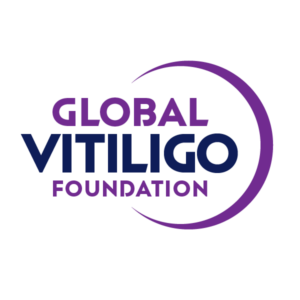Universal protocol for a double-blind, placebo-controlled, randomized, multi-center study to evaluate the safety and therapeutic efficacy of your treatment in subjects with vitiligo. This protocol can be modified to support a Phase I/II Proof of Concept trial or test of response rate.
Purpose and Goal of Universal Protocol
Currently, there are no FDA-approved medical treatments to repigment vitiligo. Recent advances in basic and translational research studies have significantly improved our understanding of vitiligo disease pathogenesis, opening new horizons and opportunities for the development of targeted therapies. With emerging therapies, there is a need for standardized and validated clinical trials to facilitate safe and efficient testing of new agents.
To address the need for clinical trial optimization, simplification, and promotion of continued clinical trials in vitiligo, the Global Vitiligo Foundation (GVF) has developed and approved a universal protocol that can be used to guide future clinical trials in vitiligo. This protocol is a joint effort of clinicians and investigators worldwide who are experienced in treating vitiligo. The Universal Protocol provides a standardized template for eligibility criteria, safety measures, and outcome assessment tools. The consistency of these criteria will provide a framework with which trials can be easily compared for safety and efficacy.
This Universal Protocol is primarily designed for pharmaceutical company-sponsored phase II and phase III clinical trials evaluating investigational products that have already successfully completed a phase I clinical trial. However, modifications can be made with less stringent efficacy endpoints and fewer patients to support a Phase I or Test of Response Rate study.
About the Protocol
The universal protocol is comprised of a standardized title, inclusion/exclusion criteria, safety assessments, disease outcome assessments, and a standardized statistical methodology to assess the results of the clinical trial. Forms, charts, and worksheets are included in the protocol to facilitate study visits and assessments.
The standardized title can be modified for study design; changes can be made for nonrandomized and/or non-blinded or single-blinded trials. Multicenter or single-center studies may be used. Each core can then be further modified for topical or systemic treatments. Additional modifications can be made for factors specific to the investigational product. If necessary, the inclusion and exclusion criteria may also be modified, according to the specific characteristics of the investigational product. However, an important aim of the authors of this universal protocol is to maintain as much of the protocol design as possible, so that a comparison between studies is possible.
Patient Safety
Patient safety is of the utmost importance. Therefore, core safety tests should be maintained as much as possible. Unnecessary tests can be removed to adapt to a specific investigational product. Generally, it is best to err on the side of caution with regards to patient safety, and so we have included a large number of tests to consider, which can be modified based on the potential anticipated adverse effects of the investigational agent. A minimum number of safety visits and assessments should be established. Additional safety visits may be added for specific investigational agents, if necessary.
Outcome Assessment
Outcome assessment measures follow a similar approach. Since the improvement of vitiligo is slow, a recommended goal is to maintain a minimum treatment period of 24 weeks and a follow-up period of 12 weeks. Outcome assessment tools specific to an investigational agent may be added. Alongside established outcome measures, new outcome measures can be tested and validated with new protocols. These novel outcome measures may ultimately add to or replace existing measures for future studies.


